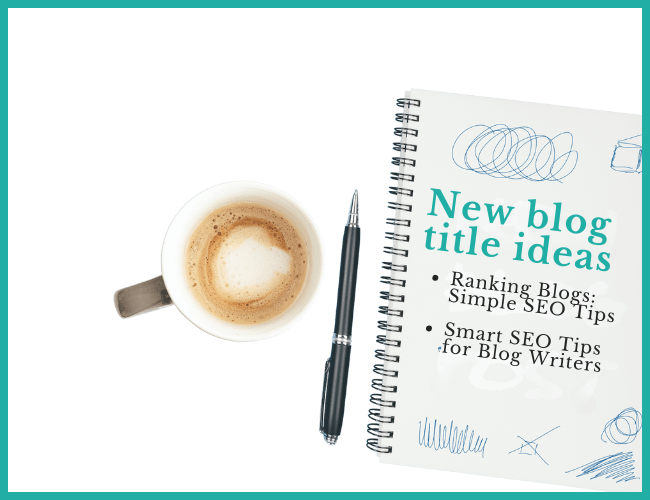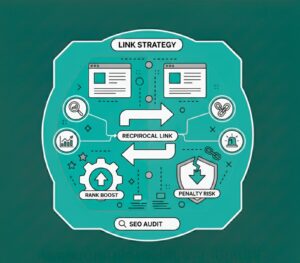SEO Tips for Blogs: How to Write Content That Actually Ranks
Blogs | SEO
Written By: Lauren Davison
Blogs | SEO
Written By: Lauren Davison
How to Make Your Blog Content Work Harder
Creating great content is one thing. But making sure people find it? That’s where the real challenge lies. Our top tips come in! In this guide, we’re breaking down practical, easy-to-apply SEO tips for blogs that’ll help your posts rise through the rankings and stay visible to the people who matter.
With more content online than ever before, it’s not enough to simply publish a post and hope it gains traction. If you want your blogs to rank well, attract readers, and convert clicks into results, you need a clear SEO strategy.
Whether you’re writing your first blog or updating an existing content strategy, these practical blog SEO optimisation tips will help you create posts that don’t just sit online, but actually get seen.

Why SEO Still Matters for Blogs in 2025
Competition online is fierce. Despite this, blogs are still one of the most effective tools for organic growth. However, they need to be optimised properly.
Implementing the right SEO blog optimisation tips will help your content get found by the right people at the right time. That means more visibility, more authority, and ultimately more leads. And the best part? It’s not about writing more content, it’s about writing smarter. Instead of publishing more posts, focus on crafting well-optimised content that is aligned with user intent and designed to attract the right readers.
With a well-executed SEO strategy, your blogs can become powerful tools that work for you, bringing in organic traffic and contributing to your long-term business success.
Start with Intent-Driven Keyword Research
One of the most vital SEO tips for blogs is to make sure you understand what your audience is searching for and why. If you’re just getting started with keyword planning, our Keyword Research Checklist will guide you through the process.
Rather than targeting generic keywords with sky-high competition, focus on long-tail, intent-based phrases that align with your niche. These tend to have lower competition and higher conversion potential.
Let’s take Midland Marketing. Instead of writing about ‘marketing tips,’ something like ‘SEO tips for blogs’ gives you a clearer angle and a more defined audience.
Pro tip: Always consider search intent. Is the user looking to learn something? Buy something? Compare options? Your content should directly answer that need.

Nail Your Blog Structure Early On
Search engines love well-structured content. It makes it easier for them to crawl, understand, and rank your content.
A strong structure doesn’t just help Google, it also keeps your readers engaged. It makes it easier to digest, making it more likely that a reader will stick around.
To help you get the most out of your blog structure, here’s our quick blog SEO optimisation tips:
- Use a single H1 tag for your title
- Break up content using H2s for key sections and H3s for supporting points
- Keep paragraphs short and skimmable
- Use bullet points, numbered lists, and bold highlights to aid readability
Create Click-Worthy Titles
Your blog title is your first impression. It’s what appears in search results, on social media shares, and even browser tabs. So it needs to work hard.
A great title should be:
Clear and descriptive
Include your target keyword
Speak directly to the reader’s intent
Here’s a good example in action:
❌ ‘Blog SEO‘
✅ ‘SEO Tips for Blogs: How to Write Content That Actually Ranks‘
Keep your title under 60 characters if possible, so it doesn’t get cut off in search results.

Optimise Your Meta Description
Meta descriptions don’t directly influence your rankings, but they absolutely affect whether someone clicks on your post. That’s why it’s it’s one of our key SEO tips for blogs.
You’ve got around 150–160 characters to summarise your content and entice someone to click. A well-crafted meta description not only gives readers a preview of what your blog offers, but encourages them to click. It’s your chance to make a strong first impression and increase the likelihood of driving traffic to your site.
Example:
‘Discover 10 essential SEO tips for blogs, including how to structure content, choose the right keywords, and boost rankings in 2025.’
Use Short, SEO-Friendly URLs
A clean, keyword-rich URL is a small but important detail when it comes to blog SEO optimisation tips. It may seem minor, but a well-structured URL can make your content easier for both search engines and readers to find.
Avoid clunky, autogenerated URLs like:
yourdomain.com/blog/123456/post-title
Instead, aim for something simple and direct, such as: yourdomain.com/seo-tips-for-blogs
Keeping URLs lowercase, using hyphens to separate words, and removing unnecessary stop words (like ‘and’ or ‘the’) will improve both readability and SEO.

Use Internal and External Links Strategically
When it comes to SEO blog optimisation, linking is a key part of user experience and SEO.
Internal links help guide readers to related content, keeping them engaged longer and spreading authority across your pages. If done right, like our guide on internal linking explains, it can really boost your site’s performance and reduce bounce rate.
External links to high-quality sources back up your content and signal to Google that your blog is trustworthy and well-researched.
Top tip: When adding links, always use descriptive anchor text (e.g., ‘check out our guide to content marketing’ instead of ‘click here’). This provides more context and boosts SEO.
Don’t Sleep on Image Optimisation
Images enrich your blog. Yet if they’re not optimised, they’ll slow your site down and drag your SEO performance with it.
Here are a few image SEO tips for blogs you can use to help:
Compress images before uploading to reduce file size without sacrificing quality. This helps improve page load speed.
Use descriptive file names (e.g., seo-tips-infographic.jpg) to give search engines more context about the image.
Add relevant alt text using keywords where appropriate to improve SEO and make your blog more accessible to all users. Alt text is particularly crucial as Google continues to prioritise accessibility.

Write for Humans First, Google Second
Here’s the truth: algorithms change, but great content is always relevant.
Rather than obsessing over keyword density, focus on creating genuinely helpful, valuable content that answers your audience’s questions. A natural tone, clear explanations, and an emphasis on value will always win over simply ticking SEO boxes.
When it comes to blog SEO optimisation tips, remember that quality content is what earns rankings. It’s not just about clever keyword placement. Write with your audience in mind, and the search engines will follow. In short, don’t just chase rankings, earn them.
Depending on your goals, you might also want to consider the length of your content. Understanding how long form content like blogs fit into your strategy can help you strike the right balance between depth and readability.
Make Sure Your Blog Works on Mobile
Google now predominantly uses the mobile version of your website for indexing and ranking. This process is known as mobile-first indexing.
It means that even if your desktop site is well-optimised, it’s the mobile version that Google prioritises when determining your site’s visibility.
Here’s some quick SEO tips for blogs to help make that happen:
- Use a responsive theme
- Keep font sizes legible
- Avoid huge images or complex layouts
- Test load speed with tools like PageSpeed Insights or GTmetrix

Update Old Blogs to Keep Rankings Strong
SEO doesn’t stop after you hit publish. Over time, content can become outdated, and Google notices this. Fresh, up-to-date content is a key factor in maintaining and improving your rankings.
Regularly updating your blog posts with new information, relevant stats, and improved formatting ensures that your content remains competitive and valuable to your audience. This is one of the core SEO blog optimisation tips that can help your content stay authoritative and trustworthy in the eyes of Google.
If a post is already ranking on page two or three, a small refresh could be all it takes to push it to page one. Even minor updates, such as adding new insights or tweaking your title and meta descriptions, can make a big difference in performance.
Final Thoughts: SEO Tips for Blogs That Work Long-Term
You don’t need to be an SEO expert to write content that ranks. You just need to be consistent, intentional, and audience-focused.
By applying these SEO tips for blogs, you can turn your blog from a digital afterthought into a powerful traffic driver.
Want help creating blog content that actually delivers results? Whether you need one post or a full content strategy, we’re here to help. Let’s talk!


Written by - Lauren Davison
Introducing Lauren – one of our content writers who has a flair for SEO and creative strategy!
With a Master’s Degree in Creative Writing, Lauren has niched down into SEO and content writing.
Outside of work, she loves watching the darts, reading and the pub on the weekend.
Want some more?
Latest Insights & News

Revolutionising Marketing: The Rise of Situational Content Strategies
Situational content strategies involve tailoring content to specific moments, contexts, or audience behaviours. By aligning content with real-time trends, seasonal needs, and user intent, brands can increase relevance, improve engagement, and strengthen SEO performance.

Smart Ways to Identify and Fill Content Gaps Fast: A Complete Strategy Guide
Content gaps refer to missing information, unanswered questions, or underserved topics in your existing content. Identifying these gaps helps you create targeted, high-value pages that improve search visibility, satisfy user intent, and outperform competitors.

Reciprocal Links in SEO: Do They Still Boost Rankings or Risk Penalties?
For the keyword “reciprocal links SEO,” focus on explaining how reciprocal linking works today. Reciprocal links are not harmful by default, but Google can flag excessive or manipulative link exchanges. To stay safe, only exchange links when they are contextually relevant, natural, and valuable to users.





Excellent points on mobile-first indexing and the crucial role of updating old blog posts! It’s so true that SEO is an ongoing effort, and these are two areas that can significantly impact rankings. Ensuring a seamless mobile experience and consistently refreshing content are fundamental. For businesses aiming to comprehensively address these technical and content strategy aspects, dedicated SEO services can provide the expertise needed to stay ahead and keep those rankings strong.